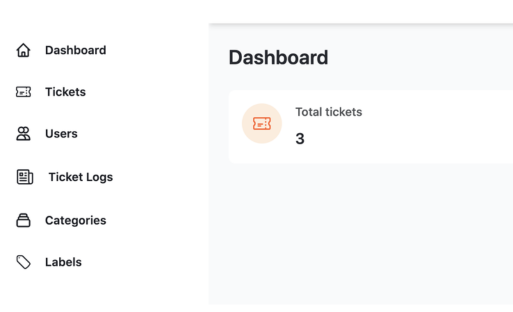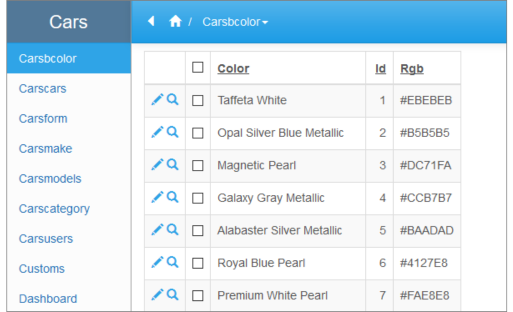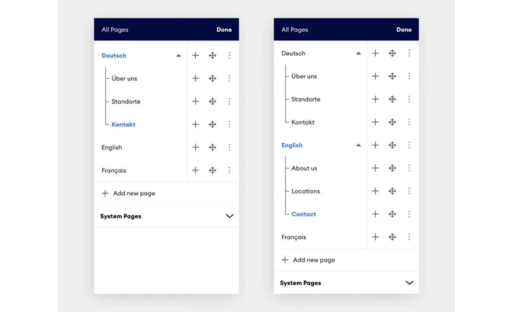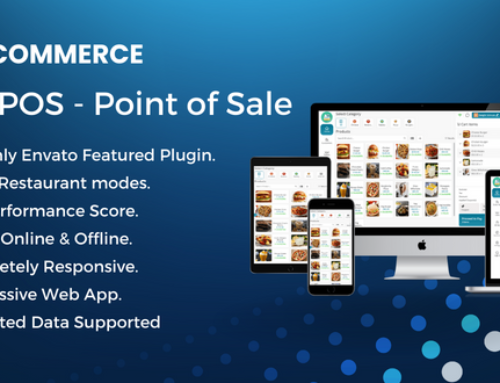INTRODUCTION: LARAVEL HELPDESK
Individuals as well as website proprietors who want to improve their customer care offerings can take advantage of the full solution provided by the powerful Laravel helpdesk and ticketing system. This system offers a wide variety of features and functionalities, and its primary focus is on delivering outstanding support to clients. It facilitates efficient administration of client requests by letting users classify and prioritize them according to the issue type, category, and priority level. The system guarantees that customers receive timely and effective service while retaining a clear picture of their demands by assigning these requests to the right team members and following their progress through the ticket history and timeline.
The fact that this helpdesk system places a strong emphasis on collaborative efforts, as well as self-service alternatives, as well as self-service alternatives is one of its primary advantages. The solution promotes seamless teamwork and ensures a smooth flow of support procedures by providing employee groups and the option to allocate tickets to numerous team members simultaneously. Customers, on the other hand, can take advantage of a knowledge base that is made up of articles that provide them with the information they need to find solutions on their own. The goal of this system is to deliver a consistent and satisfying experience for the customer support journey by providing support that is both comprehensive and easy to use.
In addition, Laravel’s robust helpdesk and ticketing system places a high priority on users’ privacy and security. Enhanced protection procedures, such as whitelisting or blacklisting nations for application access, are incorporated into it to ward off any potential dangers that may arise. In addition to this, it protects the confidentiality of the agents’ names and provides automated tools to streamline support operations.
Users are able to modify the system to meet their individual needs by taking advantage of the numerous customization options that are included in the system. These include a user’s choice of email templates, custom CSS and JS, as well as custom fields. Because of its extensive feature set, the system guarantees effective ticket management, cooperation, security, and customization. As a result, it is a dependable solution for improving customer support services.
Features
Responsive User Interface:
The user interface of the helpdesk software is very responsive and can easily be adapted to fit a variety of screen sizes and devices. Customers may anticipate the same high-quality and well-optimized user experience regardless of the device they use to access the system (desktop computers, laptops, tablets, or mobile phones). Users are able to browse the helpdesk system in a way that is both simple and effective thanks to the responsive design, which guarantees that all of the system’s operations and features are easily accessible.
Helpdesk Articles & Categories:
Because the software contains a complete helpdesk articles and categories feature, it gives companies the ability to build a knowledge base that responds to the most common questions and issues raised by customers. Businesses can improve their customer’s overall experience by making it easier to navigate their website by categorizing their content into relevant categories. Customers can use these articles to find solutions to their problems on their own, which will cut down on the requirement for direct support engagements. This feature also assists support agents since it provides a repository of materials that they may reference when responding to client inquiries. As a result, support agents are more likely to provide responses that are accurate and consistent.
Multiple Language System:
The comprehensive multiple-language support system is incorporated into the helpdesk software to accommodate the wide range of customers who use the service. Because of this functionality, businesses are now able to provide customer care in a variety of languages, making it easier for customers all over the world to communicate and understand. Customers will have the ability to select their favorite language for a more individualized and tailored support experience if the system administrators are able to add and configure different languages within the system. Businesses are able to overcome language obstacles, enhance customer happiness, and provide assistance to a worldwide audience when they have access to support in many languages.
Email verifications:
The implementation of email verifications within the helpdesk system helps to ensure the continued safety and validity of user accounts. Customers receive verification emails to validate their identities whenever they register or make changes to the email addresses associated with their accounts. This procedure provides an additional degree of security by prohibiting unauthorized access to user accounts and guaranteeing that all interactions that take place within the system are authentic and safe. Businesses may maintain a reputable user base and reduce the chance of being involved in fraudulent activities by confirming the email addresses of their customers.
Email notifications for users and account notifications:
Users are kept informed of significant activity and updates via the system’s comprehensive email notification capabilities, which are part of the helpdesk system. Users are alerted by email if a relevant event occurs, such as a change in the ticket’s status, a response from a support agent, or an activity linked to the user’s account. These notifications guarantee that consumers are kept up to date and actively engaged with the support process, which facilitates rapid responses and enhances customer satisfaction. In addition, users can efficiently monitor and manage their accounts by receiving alerts about account-related activity, such as changes to their passwords or updates to their profiles, via account notifications. These alerts are sent to users.
Two-Factor Authentication:
Two-factor authentication (2FA) is built into the helpdesk system so that users can increase the level of protection for their accounts. When two-factor authentication (2FA) is enabled, users are needed to supply both their standard login credentials as well as an additional authentication factor, which is often a temporary code that is delivered to their mobile devices. This code is used to verify that the user is who they say they are. This additional layer of protection helps prevent unauthorized access to user accounts, which in turn reduces the risk of data breaches and ensures that only authorized persons are able to access critical information.
Businesses may increase user trust, protect sensitive information, and uphold a secure support environment by using 2FA.
New administrative interface:
A redesigned and easy user interface for administrators has been integrated into the helpdesk system, offering a more streamlined and straightforward experience overall. The new user interface boasts improved navigation, enhanced accessibility to important functionalities, and a style that is more in line with modern design. Administrators are able to manage a variety of features of the helpdesk system in an effective manner. These aspects include user accounts, ticket assignments, system settings, and statistics. The modernized admin interface increases productivity and makes administrative chores easier, which gives administrators the ability to more effectively manage the support process and improve overall operations.
Every website statistic:
The comprehensive website statistics function of the helpdesk system provides businesses with the opportunity to obtain useful insights into their support operations as well as the contacts they have with their customers. This function gives administrators access to in-depth insights and metrics, such as the number of tickets received, the amount of time it takes to respond to them, the level of user involvement, and satisfaction ratings.
Businesses are able to recognize trends, zero in on areas that need improvement, and generate data-driven decisions to enhance their support services if they conduct statistical analysis of the relevant data. The website statistics function is a vital tool that can be used to monitor performance, optimize workflows, and continually improve the experience that customers have when they contact support.
Managing Tickets and Users:
The helpdesk system provides administrators with powerful ticket management and user management functions, which enable the administrators to handle user accounts and customer questions in an effective manner. Administrators have the ability to monitor the entirety of the support ticket lifecycle, from the point at which tickets are created to the point at which they are closed, thereby ensuring that all client requests are satisfactorily answered.
In addition, administrators have the ability to manage user accounts, which includes registering users, assigning rights, and configuring profile settings. This provides users with a more individualized and secure experience. Ticket and user management skills enable administrators to maintain organized workflows and provide timely assistance to clients, hence streamlining the process of providing customer care.
For Each Language, a Menu Builder:
The menu builder is a function that is included in the helpdesk system. This feature allows for the system to support many languages, which allows for seamless navigation and localization. Administrators have the ability to design and personalize menus that are specific to several languages. This makes it easier for users to navigate the interface, regardless of their preferred language.
Businesses are able to give a unified and customized support experience to customers if they provide users with language-specific menus. These menus make it simple for customers to get the information and services they require. User satisfaction may be improved with the help of the menu builder tool, which also assists businesses in meeting the varied requirements of their foreign consumer base.
Creating Articles and Categories in Every Language:
Businesses are able to provide support resources in different languages by utilizing the capability of the helpdesk system that allows them to create language-specific articles and categories. Administrators have the ability to generate articles and organize those articles into categories, guaranteeing that customers may access relevant content in the language of their choice. Customers are given the ability to identify solutions on their own thanks to this capacity, which encourages self-service support. Businesses can demonstrate their dedication to offering comprehensive support and catering to the varied requirements of their international user base by developing articles and categories specifically for each language that is supported by their platform.
Full Website Settings:
Administrators are given access to a complete website settings menu within the helpdesk system. This gives them the ability to adjust various components of the system so that they are in line with the requirements that are unique to them. The administrators have the ability to modify the system’s overall appearance, including its branding, email templates, and other crucial configurations. Because of its adaptability, the helpdesk system may be adapted by companies to reflect their unique brand identities, resulting in a user experience that is uniform and unified. Administrators are able to optimize the system to represent their distinctive customer service procedures and image brand because they have complete control over the website’s settings.
Develop Pages for All Languages:
The page-building functionality is available in each language that is supported by the helpdesk system. This allows for the creation of a customized and localized user experience when receiving support. Administrators have the ability to construct and develop individualized sites that cater to the particular requirements and preferences of users writing in a variety of languages. Businesses may now offer announcements, promotions, and other information that is customized to a given language, ensuring that users receive help that is both targeted and contextually appropriate. Businesses are able to effectively communicate with the broad client base they have by delivering a personalized support journey if they construct pages in each language their customers speak.
Manage Admins:
Within the framework of the helpdesk system, administrators have complete authority over the maintenance of other administrative accounts. This feature gives administrators the ability to add, remove, or edit admin accounts, as well as assign certain responsibilities and rights, and monitor administrative actions. Businesses are able to guarantee that the appropriate persons have access to the system’s functionality, maintain responsibility, and effectively distribute duties when they manage admins. The administration process is simplified as a result of this feature, which also makes it possible for companies to delineate clearly defined roles and responsibilities for their support team.
Translation and Language Adding:
The capabilities to translate are included in the helpdesk system, in addition to supporting the simple addition of new languages. Businesses can increase their capacity for multilingual service by adding additional languages as needed to the system by system administrators. The translation function makes it easier to localize components of the system, such as interface labels, buttons, and error messages. This allows the creation of a unified and consistent user experience across all languages for which translation is available. Businesses are able to adapt their customer support systems to new markets, target specific language demographics, and efficiently engage with consumers located all over the world if they enable language adding and translation.
SEO Configurations for All Languages:
Businesses can make use of the SEO setups function in order to optimize the helpdesk system’s exposure and searchability across a variety of languages. Administrators have the ability to tailor the system’s metadata, keywords, descriptions, and other search engine optimization (SEO) characteristics for each supported language. This ensures that the system is optimized for search engines in a variety of markets. Businesses may improve their online presence, draw organic traffic, and make their support resources easier to find by putting language-specific SEO setups into place. With the help of this tool, businesses are given the opportunity to strengthen their whole digital marketing strategy by capitalizing on the most effective SEO practices and implementing those practices across all language subsets.
Advanced Helpdesk:
Customers will receive high-level support and assistance via this helpdesk system, which was developed specifically for them. It provides a comprehensive collection of features and functionalities, making it possible to manage customer questions, concerns, and requests in an efficient manner. Businesses are able to improve the efficiency of their customer support operations, keep track of tickets, and guarantee the quick resolution of customer issues when they use the advanced helpdesk.
Simple Ticket System:
The use of the ticket system helps to make it easier to manage the questions and demands of customers. Customers are able to submit tickets, which are then sorted into relevant categories and given to the teams or agents responsible for providing help. The system guarantees that all client complaints are registered, managed, and resolved in a structured and organized manner, which leads to enhanced customer satisfaction and efficient support operations.
Multi-language System:
Businesses are now able to provide help to their consumers and connect with them in a variety of languages thanks to the multi-language system. It makes it possible to create and manage information in many languages, including articles for the helpdesk, categories, and notifications. This capability is especially useful for companies that serve a wide client base or that operate in foreign marketplaces since it means that effective communication and assistance can be provided in the language that is most favored by each individual customer.
100% Responsive Design:
A responsive design was used in the construction of the helpdesk system to ensure the best possible user experience across a wide range of devices and screen sizes. No matter what kind of device a customer uses — a desktop computer, a laptop, a tablet, or a smartphone — to contact the helpdesk, the user interface will automatically modify and adapt to deliver a fluid and understandable user experience. Customers benefit from increased accessibility and convenience thanks to this responsive design, which enables them to connect with the helpdesk system in an uncomplicated manner.
Backend Built using Latest Laravel and PHP Versions:
The most recent versions of the popular PHP framework Laravel were used to create the helpdesk system’s backend. The selection of this particular technological solution ensures the system’s robustness, security, and scalability. The backend of the helpdesk system is able to handle complicated operations, data management, and interface with other systems since it makes use of modern frameworks and programming languages. This provides a foundation that is both solid and efficient for the helpdesk system.
Built with Bootstrap on the Front End:
Bootstrap, which is a popular CSS framework, was utilized in the development of the front end of the helpdesk system. This choice of frontend technology provides various benefits, such as a design that is responsive and user-friendly on mobile devices, a broad variety of pre-built components and styles, and easy customization possibilities. Other benefits include these as well. Businesses have the ability to customize the look and layout of their helpdesk systems by using Bootstrap. This allows for the creation of an interface that is both aesthetically pleasing and simple to use by customers and support staff alike.








